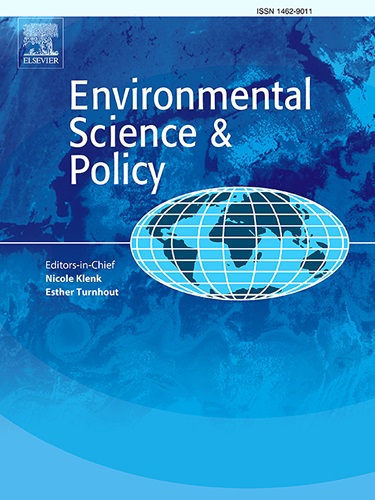从破碎到巩固:马来西亚兰加特河流域水安全多维分析的综合方法
IF 4.9
2区 环境科学与生态学
Q1 ENVIRONMENTAL SCIENCES
引用次数: 0
摘要
由于社会经济的快速发展,马来西亚半岛的河流流域面临着迫在眉睫的水安全威胁。目前的评估主要侧重于孤立的问题,导致各机构和机构之间的数据碎片化和不一致。这种碎片化阻碍了决策者理解和解释评估结果的能力,损害了可持续水资源规划和管理。为了应对这些挑战,提出了水资源管理的综合方法,包括制定综合水安全指数(CWSI)。本研究旨在探讨影响水安全的多维因素,建立流域尺度的水资源安全指数。考虑到马来西亚Langat河流域的5个维度、11个指标和33个变量,该研究采用了归一化、使用分析层次过程(AHP)加权、聚合和验证。由此得出的CWSI为0.601,证明了其在评估Langat河流域水安全方面的可靠性,表明该流域到2020年有能力满足当地的用水需求。然而,随着流域接近其最大供应能力,人们对未来产生了担忧,预计水资源压力和限制未来分配的空间。CWSI的敏感性系数小于1,表明了其在水安全状况判断中的可靠性。作为一个基准,该CWSI帮助决策者评估和解释复杂的信息,在不断变化的社会经济和环境挑战中,为马来西亚半岛河流流域更有效的水资源规划和管理做出贡献。本文章由计算机程序翻译,如有差异,请以英文原文为准。
From fragmentation to consolidation: An integrated approach for multidimensional analysis of water security in Langat River Basin, Malaysia
The river basins in Peninsular Malaysia face imminent water security threats due to rapid socioeconomic development activities. Current assessments primarily focus on isolated issues, leading to fragmented and inconsistent data across institutions and agencies. This fragmentation hampers policymakers' ability to comprehend and interpret assessment outcomes, compromising sustainable water resource planning and management. To address these challenges, an integrated approach to water resource management is proposed, involving the development of a Consolidated Water Security Index (CWSI). This study aims to examine multidimensional factors influencing water security and establish the CWSI at the river basin scale. Considering five dimensions, eleven indicators and thirty-three variables in the Langat River Basin, Malaysia, the study employs normalisation, weighting using the Analytical Hierarchy Process (AHP), aggregation and validation. The resulting CWSI of 0.601 proves reliable in assessing water security in the Langat River Basin, indicating its capacity to meet local water needs as of 2020. However, concerns arise for the future as the basin approaches its maximum supply capacity, anticipating water stress and limiting space for future allocations. With a coefficient of sensitivity less than one, the CWSI underscores its reliability in determining water security status. Serving as a benchmark, this CWSI aids policymakers in assessing and interpreting complex information, contributing to more effective water resource planning and management across Peninsular Malaysia's river basins amidst evolving socioeconomic and environmental challenges.
求助全文
通过发布文献求助,成功后即可免费获取论文全文。
去求助
来源期刊

Environmental Science & Policy
环境科学-环境科学
CiteScore
10.90
自引率
8.30%
发文量
332
审稿时长
68 days
期刊介绍:
Environmental Science & Policy promotes communication among government, business and industry, academia, and non-governmental organisations who are instrumental in the solution of environmental problems. It also seeks to advance interdisciplinary research of policy relevance on environmental issues such as climate change, biodiversity, environmental pollution and wastes, renewable and non-renewable natural resources, sustainability, and the interactions among these issues. The journal emphasises the linkages between these environmental issues and social and economic issues such as production, transport, consumption, growth, demographic changes, well-being, and health. However, the subject coverage will not be restricted to these issues and the introduction of new dimensions will be encouraged.
 求助内容:
求助内容: 应助结果提醒方式:
应助结果提醒方式:


